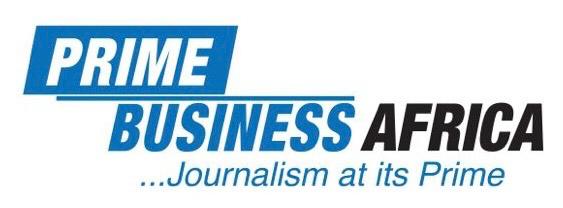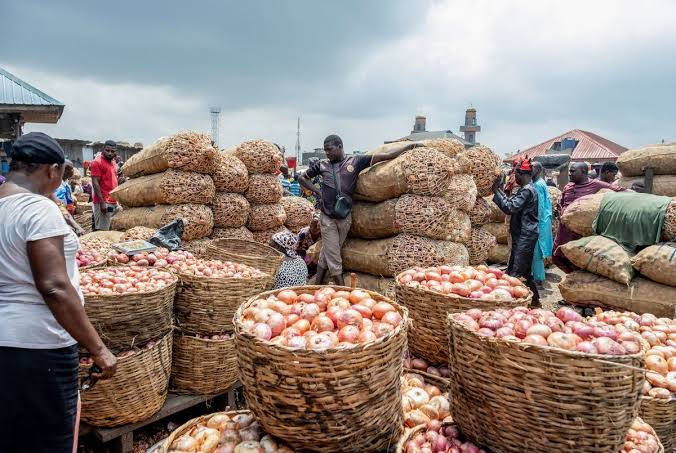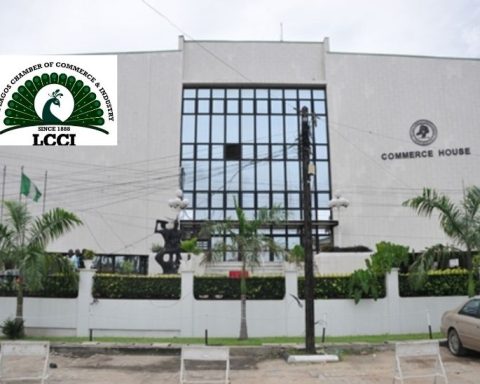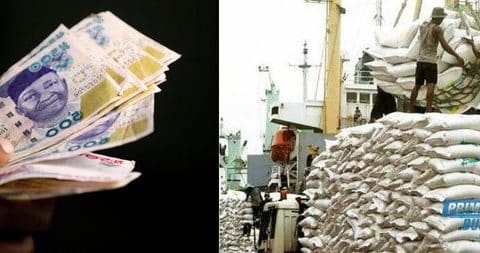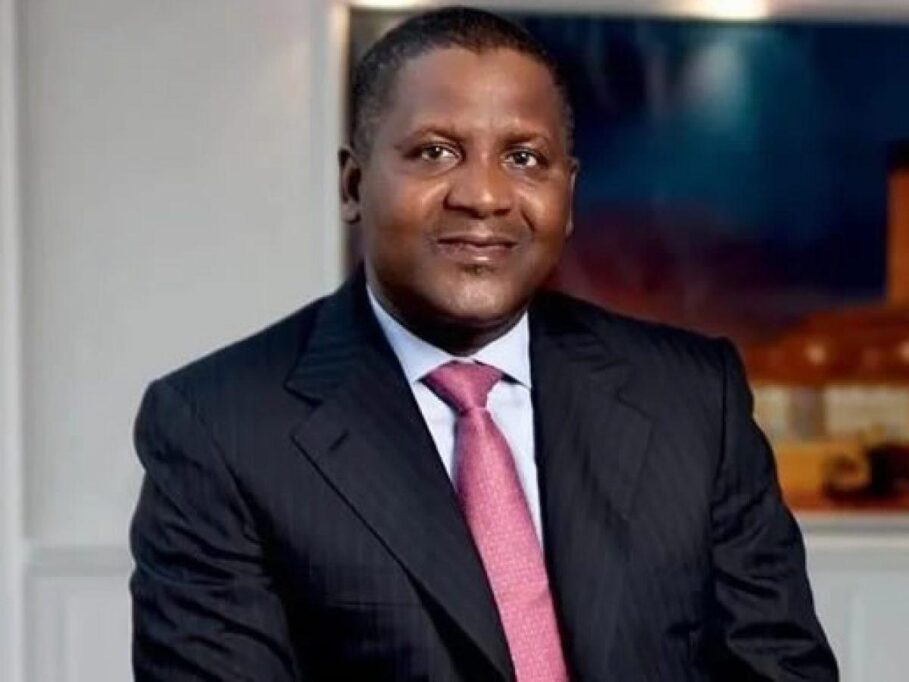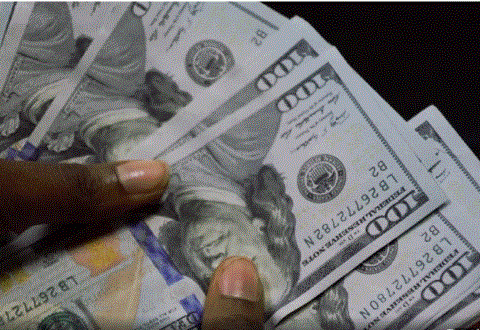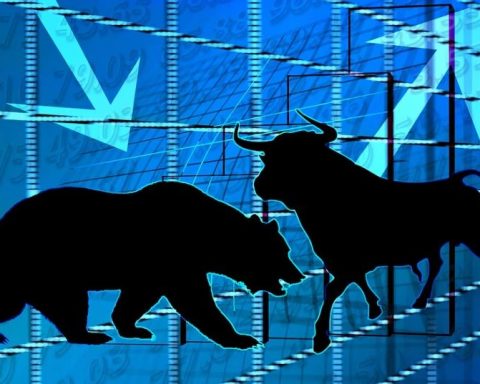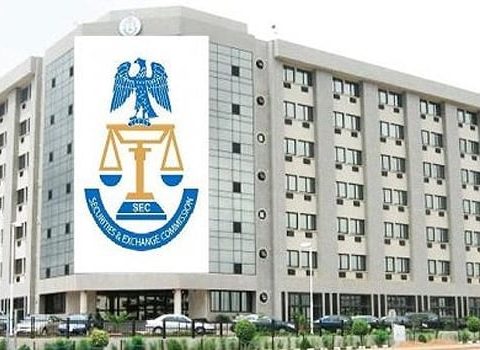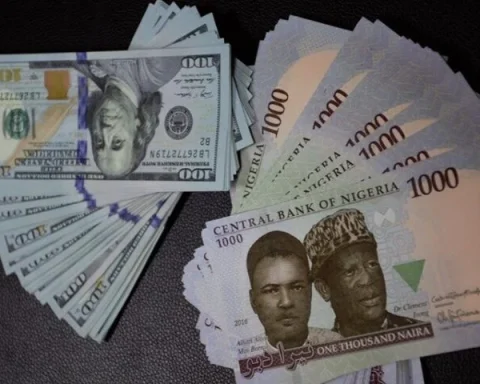1. Understanding Inflation
Inflation is one of the most used expressions in discussions about the economy. Yet the idea is often misunderstood. Although there are several schools of thought on inflation, economists generally agree that it means a constant, progressive rise in the prices of goods and services.
Join our WhatsApp ChannelSimply expressed, inflation is a condition in which there is a continuing overall increase in the cost of goods and services. A common definition of inflation is a situation in which “too much money is chasing too few goods.” The value of the currency decreases when there is inflation. When there is inflation in the economy, a certain quantity of naira will have less purchasing power over time. For instance, if N1,000.00 can purchase 10 shirts in 2023, if the price of shirts double in 2024, the same N1,000.00 can only afford 5 shirts. When a unit of currency effectively buys less as a result of the increase in prices, it is sometimes stated as a percentage.
There is aggregate or general inflation where the increase in prices that constitutes inflation must apply to the entire basket of goods in the economy, as opposed to a discrete increase in the price of a particular good or group of goods. The implication is that inflation cannot be said to have occurred because of changes in individual prices or in any combination of prices. However, a circumstance can develop in which a change in one price could result in an increase in the other prices. The cost of petroleum products in Nigeria is one illustration. Again, this does not indicate inflation until the price adjustment in the basket causes an increase in the overall level of prices.
Second, inflation must have been continuous for the price increase to be correctly termed inflation. The overall price level must be climbing steadily and consistently over a range of time periods. This must be distinguished from an instance of a sudden price increase.
Deflation, which happens when prices fall and buying power rises, is the opposite of inflation. In general, inflation in economics refers to an overall rise in the amount of money available, money income, or prices. A basic definition of inflation would be an excessive increase in the general level of prices.
How Do We Know What the Rate of Inflation Is?
Because the National Bureau of Statistics (NBS) tracks the prices of a wide range of things in a “basket” of goods and services each month, we can calculate the rate of inflation. They keep track of the prices of over 700 items that customers frequently purchase. A loaf of bread and a “molue” bus ticket are among the items in the basket. Additionally, it encompasses much larger ones like a car and a vacation. The cost of that basket reveals the general level of prices. The CPI, or Consumer Prices Index, is used to describe this. The three largest components of Nigeria’s CPI (the items on which Nigerians spend most of their incomes) are housing, transportation, and food/beverages. The NBS compares the cost of the basket, or the CPI level, with where it was a year earlier to determine the rate of inflation. The annual rate of inflation is the change in the level of prices.
Inflation can be broadly divided into four types based on its intensity.
Creeping Inflation: This type of inflation happens when prices rise very gradually. This category includes price increases that are sustained over time and are less than 3% annually. Such a price increase is thought to be both safe and necessary for economic expansion.
Walking inflation: Walking inflation is a mild price increase accompanied by a single-digit annual inflation rate. This happens when the pace of price increase falls between the moderate range of 3 to less than 10%. The government should take action to limit inflation at this rate before it turns to running inflation.
READ ALSO: 27 Ways To End ‘Nigeria’s Poverty Trap’ – IGET Policy Report
Running (or Galloping) Inflation: This is the quick annual price increase of 10% to 20% which is referred to as running inflation. When inflation is above 20% it is frequently referred to as “galloping” inflation. The poor and middle class are severely harmed by this kind of inflation. Strong monetary and fiscal policies are needed for control. Nigeria is presently experiencing running/galloping inflation.
Hyperinflation: Hyperinflation is the rapid, double- or triple-digit increase in prices. It might reach a point when the inflation rate is both utterly unmanageable and impossible to measure. Prices could increase several times a week. Because of the persistent decline in the purchasing power of money, such a circumstance results in the complete collapse of the monetary system. Venezuela and Zimbabwe are examples of countries that have experienced hyperinflation in recent years.
2. Causes of Inflation in Nigeria
An increase in the supply of money is the root cause of inflation. In Nigeria, however, a high degree of inflation has been created by a combination of both money-supply and other factors peculiar to the national economy.
Printing (creating) money, increasing the money supply beyond real economic output (for example, deficit financing of the national budget through the N22.7 trillion Ways and Means Advances by the Central Bank of Nigeria (CBN) to the Federal Government of Nigeria);
Devaluation (reducing the value) of the legal tender currency, either in a formal manner or through “imported” inflation as a result of the foreign exchange crisis (forex scarcity and multiple exchange rates) , as it steadily takes more naira to pay for the same foreign-currency value of imports, and these increased prices are passed on to consumers;
Disruptions in the supply chain of food products (which rank high in the Consumer Price Index), e.g., the impact of insecurity in the country’s Northern regions which mainly make up the food basket, as most farmers are unable to produce and transport food products at previous levels.
Inflation expectations – when the public believes prices will keep rising, or falling, and act accordingly (e.g., when they do not postpone purchases to beat rising prices, and this becomes a self-fulfilling prophecy)
In each of these scenarios, the money ultimately loses its purchasing power. Three different causes of inflationary mechanisms can be identified as a result of this: demand-pull inflation, cost-push inflation, and built in inflation.
a. Demand-Pull Inflation
Demand-pull inflation occurs when an increase in the supply of money and credit stimulates the overall demand for goods and services to increase more rapidly than the economy’s production capacity. This increases demand and leads to price rises. When people have more money, it leads to positive consumer sentiment. This, in turn, leads to higher spending, which pulls prices higher. It creates a demand-supply gap with higher demand and less flexible supply, which results in higher prices.
b. Cost-Push Inflation
Cost-push inflation happens when the cost of specific inputs in the products of businesses rise, leading to a general rise in the cost of these finished or end products or services. This is often the case when there is a negative economic shock to the supply of key commodities. These developments lead to higher costs for the finished product or service and work their way into rising consumer prices. An example is petrol scarcity, a frequent occurrence in Nigeria, which leads to a rise in transport prices – again, one of the major determinants of the Consumer Price Index.
c. Built-in Inflation
Built-in inflation is related to adaptive expectations or the idea that people expect current inflation rates to continue in the future. As the price of goods and services rises, people may expect a continuous rise in the future at a similar rate. As such, workers may demand more wages to maintain their standard of living. Their increased wages result in a higher cost of goods and services, and this wage-price spiral continues as one factor induces the other and vice-versa.
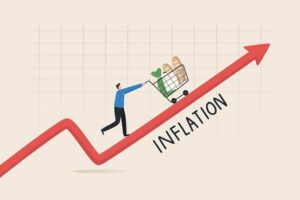
3. Inflation in Nigeria
The inflation rate for consumer prices in Nigeria moved over the past 62 years between -3.7% and 72.8%. During the observation period from 1960 to 2022, the average inflation rate was 16.1% per year. Overall, the price increase was 566,918.02%. An item that cost 100 Naira in 1960 costs 567,018.02 Naira at the beginning of 2022.
Nigeria’s headline inflation has continued to rise, hitting a new high of 21.47 per cent in November 2022 from 21.09 per cent in October 2022, according to the National Bureau of Statistics’ report released in December 2022. It is unlikely that the current inflationary surge will subside quickly; economic history suggests otherwise. Indeed, there are concerns that the country’s inflation trend may not have reached its peak considering that triggers like intermittent fuel scarcity witnessed during the past four months, stubbornly high gas and energy prices, lingering currency pressures and build-up of higher naira liquidity as the 2023 general election approaches, are yet to be addressed.
The key inflation drivers have not changed over the last few years. They include the following: the depreciating exchange rate, rising transportation costs, logistics challenges, forex market illiquidity, hike in diesel cost, climate change, insecurity ravaging farming communities and structural constraints to economic activities.
Fiscal deficit financing by the CBN, represented in the Bank’s cumulative N22.7 trillion Ways and Means Advances to the Federal Government of Nigeria over the past seven years is also a significant factor fueling inflation because it distorts the base of the money supply and injects high levels of liquidity into the economy. Tapering of monetary easing in the advanced economies is also driving imported inflation and the depreciation in the exchange rate.
What is the Relationship Between Poverty and Inflation?
Inflation intensifies the problem of poverty. For people in lower-income households who already live hand-to-mouth, paying more for essential goods like petroleum products and food can be devastating. Inflation also lowers the real minimum-wage around the world, meaning it decreases the value of minimum wage and lowers the standard of living even more for those who rely on it. Cost-push inflation makes many businesses unprofitable, as demand for these products and services decreases. This leads to factory and other business closures, and to unemployment, which perpetuates the poverty cycle.
Inflation and Poverty in Nigeria
The NBS recently released data about Nigeria’s inflation level and worsening poverty, citing it as a key driver for the rising number of poor people in the country. While many have blamed the Russia-Ukraine crisis partially for the present inflation trigger, the more important, lingering structural and security challenges driving prices of food and basic services beyond the reach of the poor and the almost non-existent middle class have often been ignored. The rise in the prices of everything, including mainstays like food and oil, is both an economic and political problem. Everyone is paying the price. Inflation in Nigeria has been poorly controlled in the past several years. Part of the mandate of the CBN is to maintain price stability, i.e., manage inflation.
Nigeria’s inflation-rate jump to 21.47% in November 2022 represents a 17-year high, raising concerns for Nigerians already battling with weak household incomes and import pass-through costs. Poor households across the country are trapped in a persistently rising cost of living cycle. Prices of basic food items increase at a double-digit percentage every other week.
The World Bank has noted that the Nigerian minimum wage, which was worth N30,000 in 2019, could be valued at N19,355 today. This means that there had been a loss of 35.48 per cent value between 2019 and 2022 as inflation erodes Nigerians’ purchasing power. “The cumulative inflation between 2019 and 2022 was 55 per cent”, the World bank’s Alex Sienaert recently noted. The rising inflation led to a slump in the purchasing power of Nigerians.
Although the CBN is making efforts to curb the rising inflation by increasing interest rates, its funding of the fiscal deficit through the Ways and Means Advances has undermined the Bank’s efforts.
The World Bank projects that the inflation shock will push about 15 million more Nigerians into poverty between 2020 and 2022 in its latest Nigeria Development Update report, titled, ‘The Continuing Urgency of Business Unusual”. Noting that Nigeria has one of the highest rates of inflation in the world, the Bank stressed the need to reduce rising rates of inflation.
Moreover, according to the Bank, “Inflationary pressures in Nigeria were compounded by policy distortions, in particular (i) lack of flexible foreign exchange management, (ii) trade restrictions, and (iii) conflicting monetary policy goals.” It further disclosed that global supply shocks arising from COVID-19 and the war in Ukraine exacerbated inflationary pressures and increased their urgency.
What Policymakers Should Do to Keep Inflation Stable
Higher interest rates make it more expensive for people to borrow money and encourage them to save. That means that overall, they will tend to spend less. If, people overall, spend less on goods and services, prices will tend to rise more slowly. That lowers the rate of inflation.
The opposite is also true. Lower interest rates mean it’s cheaper to borrow money, and there’s less of an incentive to save. This encourages people to spend and increases the rate of inflation.
Subsidies: Governments have been turning to subsidies to dampen the impact on households. In some cases, subsidies can be an effective transitional tool to ameliorate the impact of shocks. But they tend to be left in place for too long, leading invariably to adverse effects. Subsidies can quickly detract from spending on infrastructure, health, and education.
Energy subsidies tend to go to wealthier households more than poorer households and encourage excess consumption. Subsidies are better target to production than to consumption. The petrol subsidy should be removed, but a subsidized nationwide transportation system targeted at the poor should be put in place to dampen the potential inflationary impact of subsidy removal.
Social Welfare Policies: Policymakers should use effective and transparently implemented social welfare policies to protect the poorest from rising prices. These policies could include targeted safety nets such as cash transfers, food, and in-kind transfers, school feeding programs, and public works programs. Calculating inflation indexes for different income groups provides better information on inflation experienced by the poor and should inform the design of social safety nets.
Fixing Supply Side Constraints: Taming inflation demands urgent government intervention to fix supply side constraints in the economy. Tackling production and productivity constraints, fixing the dysfunctional forex policy, and markedly reducing liquidity injections through Ways and Means funding of fiscal deficit are important.
Fiscal deficits should be reduced. While there are arguments that may support fiscal budgeting, Nigeria’s economy is not sophisticated enough to support this practice, which creates a temptation to resort to excessive borrowings, including those from the Central Bank of Nigeria that are above legally permissible limits. The major focus of the federal government should be improving its revenue generation by reducing taxation levels while expanding the tax net and abolish wasteful waivers to the commercial sector.
Economic and investment policy must focus on how to bring down the costs of electricity and transportation while maintaining market profitability, as these are major contributing factors to built-in inflation.
Pause Hikes in Monetary Policy Rate: Meanwhile, the CBN should resist the temptation to further increase the Monetary Policy Rate. The deployment of this monetary tightening tool should be put on pause. Prior distortions and contradictions in monetary and foreign exchange, the structural component of inflation in Nigeria, and inflation expectations, have blunted the ability of the MPR to control inflation at this time. Tightening the money supply remains important, but this should be pursued through other means of controlling the rate of money creation.
Central bank independence needs to be restored in Nigeria. The operational independence of the CBN has evidently been compromised. Unless that independence is restored, the Bank’s ability to maintain price stability (by resisting distortions in the money supply based on fiscal/political stimuli) will likely remain weakened. So will its ability to anchor inflation expectations through the MPR, as well as its ability to formulate and execute efficient foreign exchange policy, which also significantly contributes to inflation.
Courtesy: Institute for Governance and Economic Transformation (IGET)
